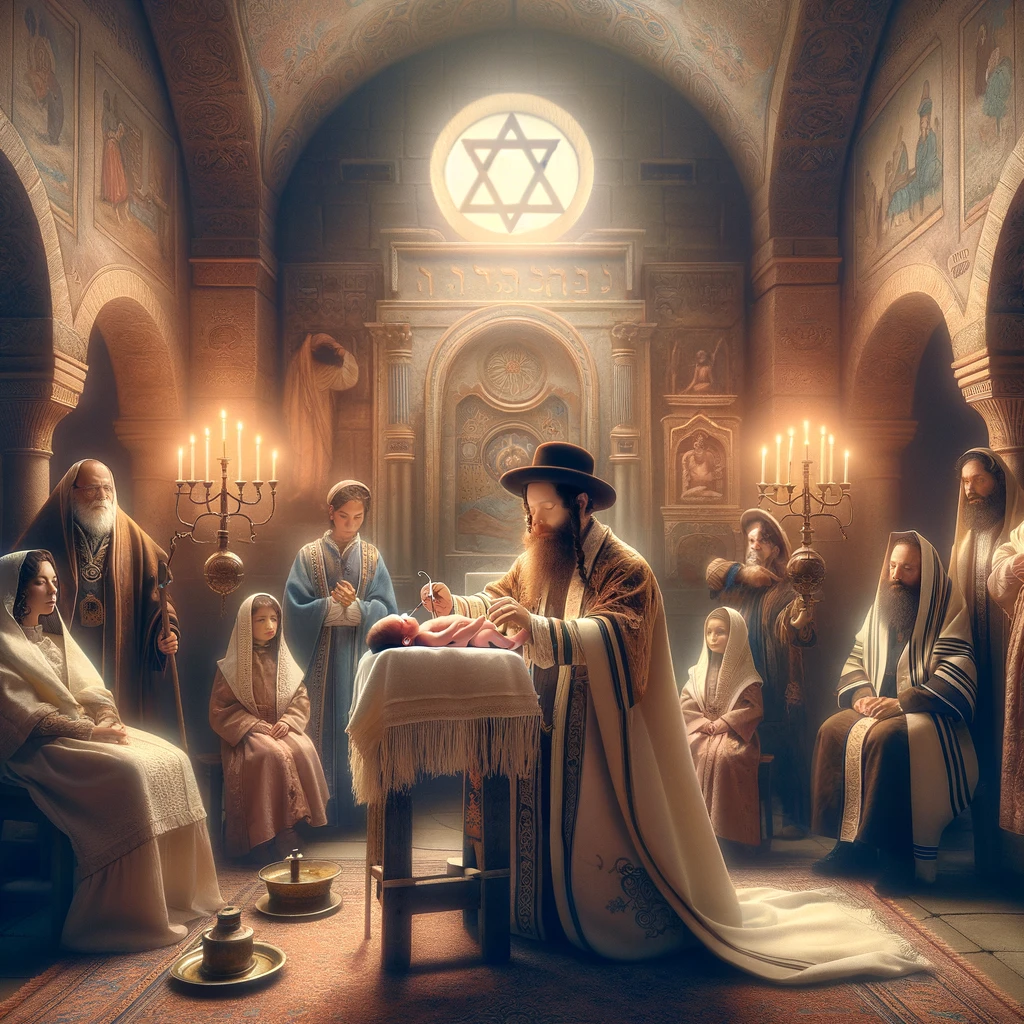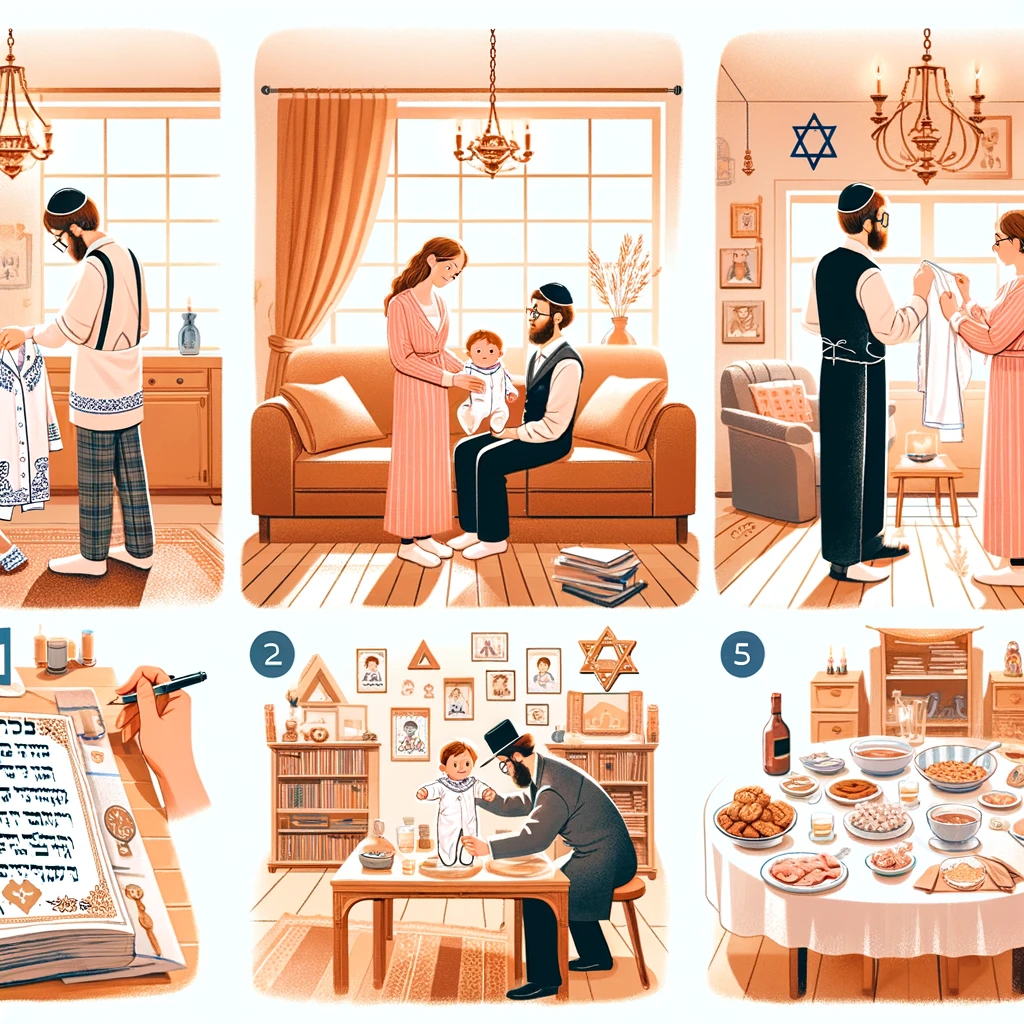The Commandment of Circumcision: The Spiritual and Historical Significance of Brit Milah in Judaism
Qualified sap

 313
313 
The Commandment of Brit Milah: The Spiritual and Historical Significance in Jewish Tradition
Brit Milah is one of the central and oldest commandments in Judaism. Its roots are found in the Book of Genesis, with the command to Abraham our father to circumcise himself and his offspring as a sign of the covenant with God. Since then, Brit Milah continues to be a guiding light for the Jewish people, a symbol of faith, dedication, and belonging.
Brit Milah as a Spiritual Covenant The spiritual significance of Brit Milah is profound and multifaceted. It primarily represents the eternal covenant between God and the people of Israel. By performing Brit Milah on his son, the father connects him to the chain of generations, to the faith of his ancestors, and to the divine purpose of his people. The circumcision symbolizes the total dedication of the individual to his Creator, recognition of His sovereignty, and a willingness to live according to His laws.
Brit Milah also expresses the uniqueness of the individual as a spiritual being, beyond his material needs. It serves as a "seal in the flesh" and emphasizes the individual's role in restraining his desires and rising above the material. By removing the foreskin, we purify ourselves and remove barriers that separate us from holiness.
Finally, Brit Milah marks the official entry of the infant into the Jewish community. From this moment on, he proudly carries his Jewish identity and is committed to the commandments and values of faith. The covenant is the community's welcoming ceremony for the new soul that has joined it, and it signifies the shared responsibility for his education and spiritual well-being.
Brit Milah Throughout History Historically, Brit Milah has undergone developments and changes over the generations, yet it has always maintained its essence and central place. In biblical times, it was customary to perform the circumcision on the eighth day after birth, as stated in the Torah. During the Second Temple period and afterward, with the rising threat from foreign cultures, circumcision became a distinct symbol of belonging and loyalty to Judaism. Many sacrificed their lives and those of their loved ones to uphold this commandment.
In the literature of the Sages, Brit Milah has been given a special status and profound interpretations. It is described as a particularly beloved commandment, equivalent to all other commandments combined. The Midrashim and legends illuminate its spiritual and moral meanings, as well as the halakhic details of its execution. Today, Brit Milah continues to evolve with the challenges of our time, for example, with questions related to health, interfaith communities, or liberal movements. But at its core, it remains a living testament to a worldview of faith and a magnificent legacy.
Brit Milah is one of the foundations of Jewish faith and identity. Beyond its practical aspect, it embodies profound ideas of covenant, holiness, and belonging. Each time it is performed, it renews the connection between the individual and his God and between the people and their destiny, opening a window to the eternal significance of being Jewish. Together, we will continue to pass this light from generation to generation, with devotion, love, and the understanding that it is part of us, now and forever.
Additional Questions:
Is there a connection between Brit Milah and the idea of a "Chosen People"?
Absolutely. Brit Milah is seen as one of the most distinct expressions of the special status of the people of Israel as the chosen people. It characterizes the unique covenant and closeness between God and His people. On one hand, it distinguishes Israel from the nations, and on the other hand, it represents its destiny to be a "kingdom of priests and a holy nation." In this way, it emphasizes the spiritual and moral responsibility that is bestowed upon the people due to their choosing.
How does Brit Milah integrate with the Jewish value of "all Israel are responsible for one another"?
Family and community play a key role in Brit Milah. The ceremony takes place in the presence of a community and is often accompanied by a festive meal. The sandak (the person who holds the child during the circumcision) and the mohel (the one who performs the circumcision) are chosen from among loved ones, symbolizing mutual responsibility. The inclusion of the newborn into the people of Israel is a joy and a shared responsibility of the entire community. Everyone shares in the duty to educate him and instill in him values of faith and morality. In this way, Brit Milah strengthens the cohesion and solidarity among the parts of the people.
What challenges does the commandment of Brit Milah face in modern times?
Like other commandments, Brit Milah today faces complex questions. For example, some liberal movements challenge the specifics of the traditional practice. There are discussions regarding the baby’s safety and the updating of the medical procedure. Additionally, issues of equal parental partnership in decision-making and pluralism regarding the timing or nature of the ceremony arise. Modern Judaism is required to find a balance between preserving the essence of the commandment and carefully adapting to the new reality. All of this is done through attentive dialogue and mutual respect.
The task of passing down Brit Milah and its meanings to the next generation is not simple. It requires sensitivity, openness, and, above all, a great love for Torah and love for Israel. But with sincere discussion, ethical education, and a deep spiritual connection, we can preserve this treasure, allowing every Jewish child to benefit from the special light that Brit Milah brings.






